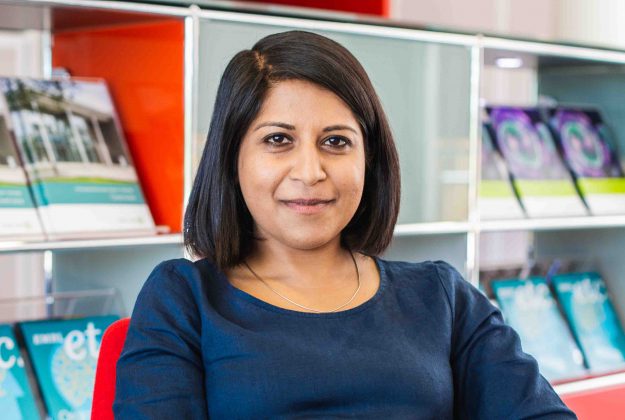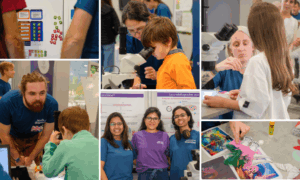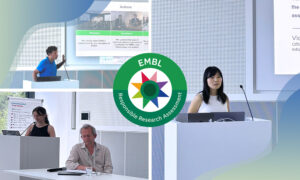
Welcome: Jessica Vamathevan
As the Head of EMBL-EBI’s Strategic Partnership Office, Jessica Vamathevan works on defining the strategic direction of EMBL-EBI and her team facilitates the crossover between academia and industry

Tell us a little bit about your career path.
My interest in science has taken me all over the world. I studied microbiology in Australia, then I worked at the Institute for Genomic Research, in the United States. There I did a lot of computational work on “filling in the gaps” in bacterial genomes.
One of the most intriguing bacterial species I’ve come across is Deinococcus radiodurans, which you can expose to extremely high doses of radiation and somehow it still manages to put its genome back together.
After a few years, I moved to the UK to do a PhD in molecular evolution. Then I spent a brief time at the Wellcome Sanger Institute, doing manual genome annotation.
I’ve always wanted to do applied work and create links between academia and industry, so when the opportunity arose to join GSK as a computational biologist, I seized it. After a few years there, which also led to being the first Chief Operating Officer for Open Targets, I moved over to EMBL’s European Bioinformatics Institute (EMBL-EBI) in a more strategic role.
What does your team do?
We create, support and grow industry activities and collaborations for all of EMBL-EBI. These span a range of things, including knowledge exchange via the EMBL-EBI Industry Programme, facilitating collaborative projects in cooperation with EMBLEM Technology Transfer, and enabling companies of all sizes to exploit EMBL-EBI’s open data resources.
What are the big challenges for bringing together industry and academia?
The opportunities for application of bioinformatics are huge and it feels like we’re only just scratching the surface. Pharma, agritech and other bio-industries are raring to harvest EMBL-EBI’s data. They’re also generating data internally across a range of experimental technologies. There is so much going on that it can be challenging to optimally and quickly use all these data to tackle disease or produce crops.
Another challenge is the divide between the questions that industry and academia are asking. We can use genomics to solve real world problems, but there are still lots of knowledge gaps in basic biology. Together, we must find a way of bridging these gaps and support shared projects.
What do you hope to achieve?
In an ideal world, I would really like for the research and data coming out of EMBL-EBI to be used to benefit translational science. The bioinformatics methods and data services we develop here are essential for applied research and having this concentration of expertise within one organisation is incomparable, so I think we should leverage industry and work more closely together.
What question do you get asked most often?
I get asked a lot if EMBL-EBI could have another Open Targets, meaning another large-scale public-private partnership. My answer is yes. There are so many unanswered questions that we should be collaborating on. Things like antimicrobial resistance, effective food production, understanding biodiversity – these are huge biological questions we could help tackle.
If you could answer one science question, what would it be?
As a personal curiosity, I would really like to know how and why Deinococcus radiodurans repairs itself after being exposed to radiation. It still bugs me after all these years because it shows just how incredibly complex biology is.


